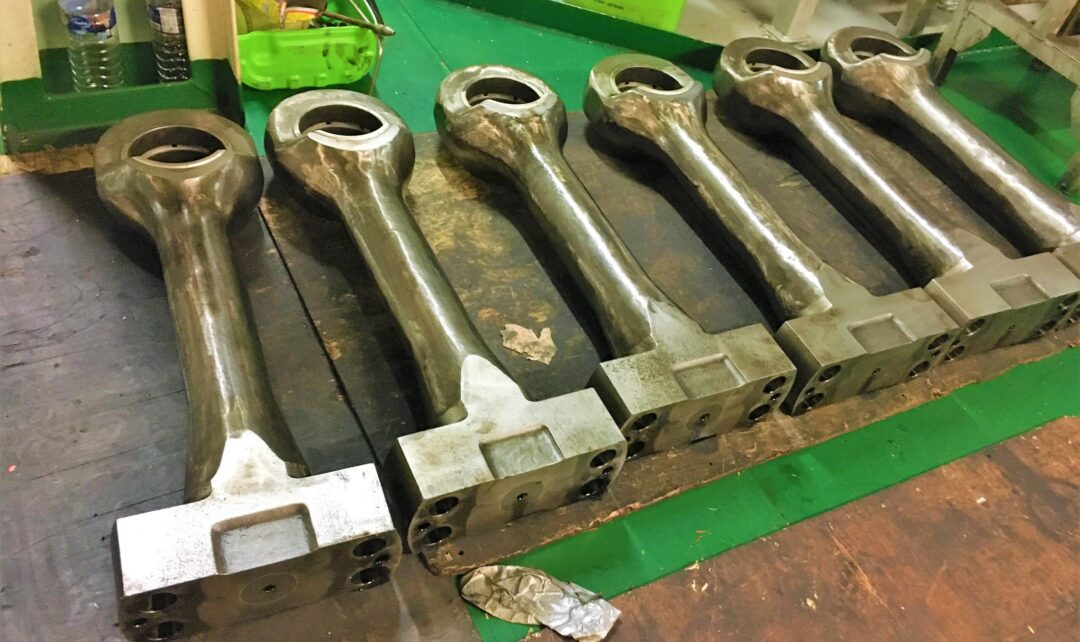A crank pin, also known as a connecting rod journal, is the part of a crankshaft that connects to the piston rod and rotates in the bearing. In a 4 stroke engine, the crankpin undergoes four phases of motion: intake, compression, power and exhaust. During these phases, the crankpin is subjected to various forces and stresses that can cause it to wear out and deform over time.
One of the common forms of deformation is ovality, which means that the crankpin becomes oval-shaped instead of circular. This can happen due to uneven wear, thermal expansion, bending stress or manufacturing defects. Ovality can affect the performance and efficiency of the engine, as well as increase the noise and vibration levels.
How to measure crank pin ovality?
It can be measured using various methods, such as:
– Micrometer: A micrometer is a device that can measure small distances with high accuracy. It has two jaws that can be adjusted to fit around the crankpin and a scale that shows the diameter. By measuring the diameter at different angles, the ovality can be calculated as the difference between the maximum and minimum values.
– Dial gauge: A dial gauge is a device that can measure small displacements with high precision. It has a needle that moves along a circular scale when it contacts a surface. By mounting the dial gauge on a stand and rotating the crankshaft, the needle will show the variation in the crankpin diameter as it moves along the scale. The ovality can be calculated as the difference between the maximum and minimum values.
– Electronic gauge: An electronic gauge is a device that can measure small distances with high accuracy and display them digitally. It has a sensor that can detect the crankpin diameter and send it to a display unit. By measuring the diameter at different angles, the ovality can be calculated as the difference between the maximum and minimum values.
It is the difference between the maximum and minimum diameters of a crank pin, which is the part of a crankshaft that connects to a connecting rod. Crank pin ovality can cause excessive wear and tear on the bearings, reduce engine performance and increase fuel consumption. Therefore, it is important to measure crank pin ovality regularly and accurately.
There are different methods to measure crank pin ovality, but one of the most common ones is using a micrometer. A micrometer is a device that can measure small distances with high precision. To use a micrometer to measure crank pin ovality, follow these steps:
Video of how to measure such ovality
1. Remove the connecting rod from the crank pin and clean the crank pin surface with a cloth or a brush.
2. Set the micrometer to zero by adjusting the thimble until the anvil and the spindle touch each other. Make sure the ratchet stop clicks when you turn the thimble.
3. Place the micrometer around the crank pin at its widest point and tighten the thimble until the ratchet stop clicks again. Read the measurement on the micrometer scale and record it as D1.
4. Rotate the micrometer 90 degrees around the crank pin and repeat step 3. Record the measurement as D2.
5. Subtract D2 from D1 to get the crank pin ovality. For example, if D1 is 50.05 mm and D2 is 49.95 mm, then the crank pin ovality is 0.1 mm.
6. Compare the crank pin ovality with the manufacturer’s specifications and determine if it is within acceptable limits. If not, you may need to replace or repair the crank pin or the bearings.

How to prevent or reduce such kind of ovality?
Crankpin ovality can be prevented or reduced by following some good practices, such as:
– Lubrication: Lubrication is essential for reducing friction and wear between the crankpin and the bearing. It also helps to dissipate heat and prevent thermal expansion. The lubricant should be of good quality and quantity and should be changed regularly according to the manufacturer’s recommendations.
– Alignment: Alignment is important for ensuring that the crankshaft and the piston rod are parallel and concentric. This reduces bending stress and uneven wear on the crankpin. The alignment should be checked and adjusted periodically using proper tools and techniques.
– Balancing: Balancing is necessary for minimizing vibration and noise in the engine. It involves adding or removing weight from the crankshaft or other rotating parts to make them rotate smoothly and evenly. The balancing should be done by a professional using specialized equipment.
– Maintenance: Maintenance is vital for keeping the engine in good condition and detecting any problems early. It involves inspecting, cleaning, repairing or replacing any worn or damaged parts of the engine. The maintenance should be done regularly according to the manufacturer’s instructions or schedule.



